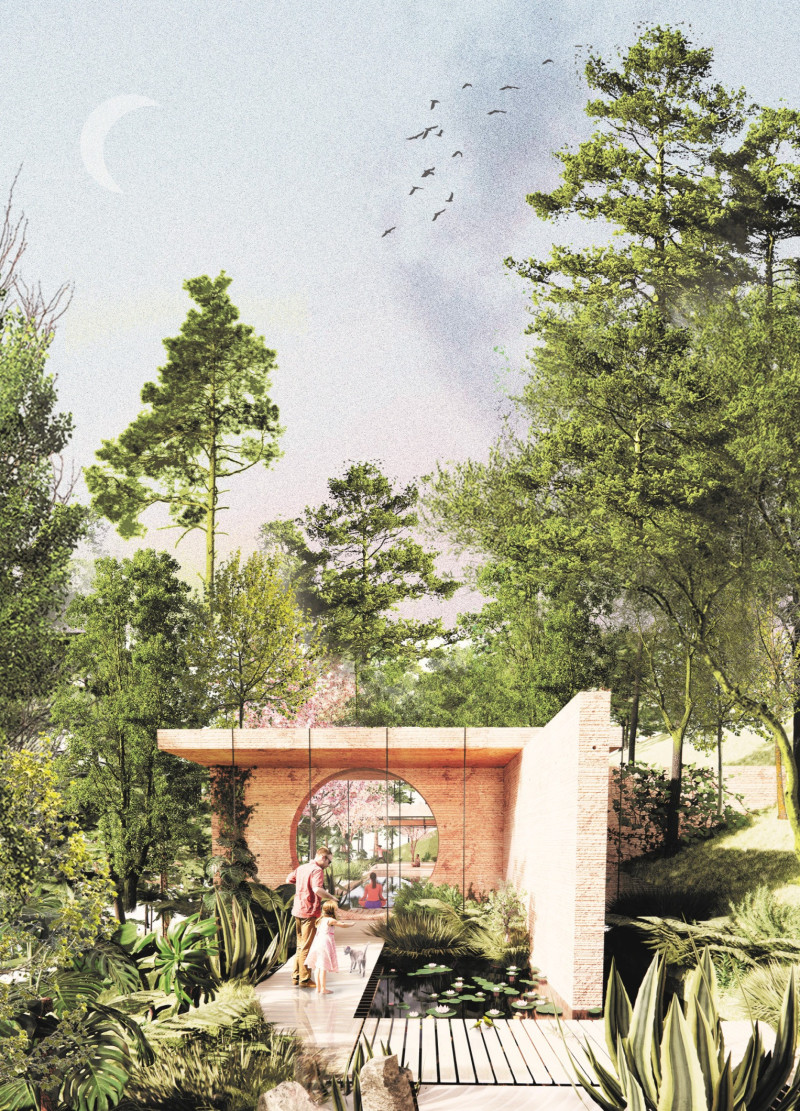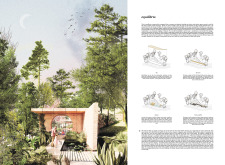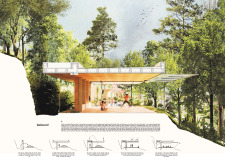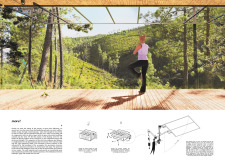5 key facts about this project
The architectural form of the project is carefully crafted to integrate seamlessly with the surrounding landscape. Utilizing an approach that champions both the aesthetic and functional aspects of design, the layout guides visitors through a series of interconnected spaces that promote both exploration and rest. The entryway features a beautifully landscaped garden that sets the tone for the harmonious experience to come, encouraging a gentle transition from the external world into a more introspective atmosphere.
Central to "Equilibrio" is the yoga pavilion, a key element that prioritizes openness and fluidity, creating an inviting environment for relaxation and physical practice. This space is designed with expansive openings that allow ample natural light to flood the interior, further enhancing the feeling of connectivity to the outdoors. The use of large glass panels fosters an unobstructed view of the lush surroundings, blurring the boundaries between indoor and outdoor spaces, which is a crucial aspect of the project’s design philosophy.
Water features play an important role in the overall atmosphere, with reflection pools strategically placed throughout the site. These pools create a sense of tranquility and encourage meditation, mirroring the project’s commitment to wellness and self-reflection. The sound of water gently flowing adds to the sensory experience, heightening the user's connection to nature.
The architectural design utilizes a carefully curated selection of materials to align with the project's sustainability goals. Local timber is employed for structural elements, lending warmth and a sense of place. Cork blocks, known for their excellent insulation properties and sustainable sourcing, enhance the building’s environmental credentials while providing comfort. Additionally, stone and natural aggregates are integrated into the pathways, establishing a tactile connection to the earth, while glass elements maintain transparency and lightness in the overall aesthetic.
Unique design approaches are evident throughout "Equilibrio". The innovative roof structure, designed to allow for natural ventilation, minimizes reliance on artificial lighting and climate control systems. This mindfulness toward energy efficiency reflects a broader commitment to sustainability and demonstrates how architecture can coexist with environmental considerations.
Moreover, the landscaping is considered an extension of the architecture, with native flora strategically chosen to enhance biodiversity while requiring minimal maintenance. This thoughtful integration of the built environment and natural ecosystems not only enriches the user's experience but also contributes to the ecological health of the site.
"Equilibrio" stands as a testament to modern architectural practices that prioritize both individual well-being and ecological sustainability. The design encapsulates a vision for spaces that promote wellness, foster community, and cultivate a deeper relationship between individuals and their environment. For those interested in further understanding the nuances of this architectural project, exploring the architectural plans, architectural sections, and various architectural designs will provide deeper insights into the well-considered ideas that underpin "Equilibrio". This project exemplifies the potential for architecture to engage meaningfully with both its inhabitants and the landscape it occupies.


























